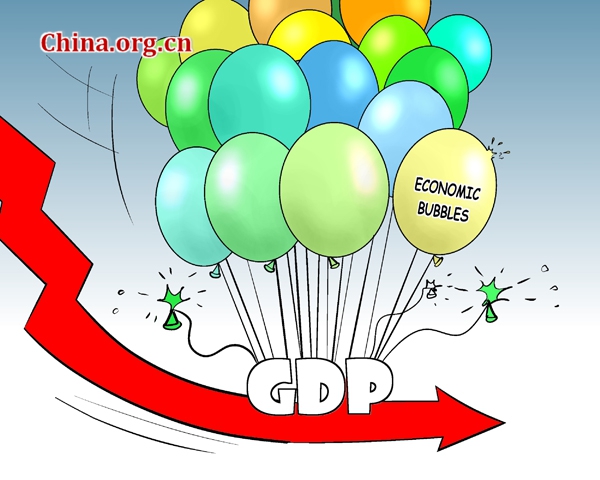A reasonable look at China's GDP (II)
- By Xia Changjiang
 0 Comment(s)
0 Comment(s) Print
Print E-mail China.org.cn, March 4, 2016
E-mail China.org.cn, March 4, 2016
Editor's note: This is the second part of a two-part opinion piece. The first part: A reasonable look at China's GDP (I)
|
|
|
Driving forward growth [By Jiao Haiyang/China.org.cn] |
Exports and domestic consumption
Some have expressed doubts over China's GDP growth rate because the country's exports have dropped.
How much the decrease in exports affects China's domestic economy should be analyzed in two aspects. The first is exports' influence on the industrial sector. It was estimated that their decline caused the revenue of major businesses to drop about 0.2 percentage points and their added value 0.8 percentage points.
The second factor is domestic consumption's influence on exports, which should also be analyzed from two aspects -- consumer goods and production materials. In 2015, China's annual retail sales of consumer goods rose 10.7 percent. Some consumer goods produced originally for export were sold in the domestic market.
Prominent problems were actually seen among production materials, especially steel, machinery and chemical fibers, which were hard to be absorbed domestically. This situation was reflected by the statistics of each sector.
The current situation in China is similar to the United States in the 1970s, as both countries' heavy industries engaged in transfer overseas. When the United States completed its industrial transformation, final consumption became a major driving force of GDP growth.
Government expenditure
In 2015, the regular public financial expenditure grew 18.9 percent, reaching a historical high during a four-year period. Government expenditure constituted about 14 percent of national GDP, adding 1.2 percentage points of its overall growth.
Despite the reduction of administrative overheads, the government still saw an increase in expenditure for two main reasons. The first was the increase in spending to improve people's living standards. The second was the adjustment of wages and spending on pensions for personnel at state organs and public institutions. The two factors resulted in the increase in regular government expenditure.






